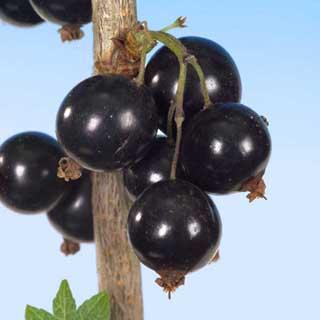Understanding Climate Effects On Woody Fruit Crops
Published on 6 April 2010 in Climate, water and energy

Introduction
The increasing variability of UK weather patterns can affect the performance of crop plants in both yield and quality. For perennial crops, including berry fruits, the effects can be particularly significant, especially where winter temperatures affect the plant’s dormancy processes. A succession of mild winters prior to 2009 led to developmental changes in some fruit plants, notably blackcurrants, in the subsequent cropping season. The degree of chilling received by the plants during the dormant period, to fulfill a chilling requirement that varies between species and cultivars, has profound effects on budbreak, flowering and ultimately fruit quality in the harvested crop.
Studies of historical meteorological data for the UK using a range of models for assessment of winter temperatures have indicated a decline in levels of winter chilling over the past 50 years. Projected future increases in temperature suggest that in northern latitudes these may be proportionately greater in winter. However, whilst the overall trend is firmly towards warmer winters, there remains the possibility of occasionally severe conditions such as those experienced across the UK in the winter just ending. As a result, fruit breeders must aim to produce varieties with resilience to perform well across a range of climatic conditions.
In addition to the erratic budbreak described in blackcurrant, woody plants in some locations are also ending their dormancy earlier after mild winters, increasing the risk of frost at flowering time. This situation is now occurring with regularity in more northerly locations, such as Norway. Blackcurrant germplasm with later-flowering traits may therefore be of increasing importance in the future.
Key Points
Blackcurrant is grown widely across northern temperate regions of Europe and also in New Zealand. UK production is based entirely on the `Ben’ series, from the earliest release Ben Lomond in 1972 to the more recent Ben Starav and Ben Klibreck (2008). Blackcurrant has a relatively high chilling requirement, estimated at <1300 h below 7.2oC for some New Zealand cultivars to over 2000 h for some late-flowering Scottish types such as Ben Lomond.
Plantations of cultivars which have received insufficient chilling during recent UK winters, notably in southern locations such as Kent and Herefordshire, have suffered erratic budbreak and a subsequent reduction in harvested quality.

Photograph: Ben Klibreck blackcurrants bred at SCRI
Research Undertaken
The response of blackcurrant genotypes to chilling temperatures was examined using controlled environment facilities at SCRI, and using novel analytical approaches it was established that the various genotypes had very diverse chilling responses. The responses varied in both time and also in the most effective chilling temperature for each genotype. Using this information, a high-throughput method of assessing blackcurrant breeding populations and advanced selections is under development, to assess their chilling requirement and enable the selection of environmentally-resilient `Ben’ blackcurrant cultivars into the future within the downstream commercially-funded breeding programmes.
Additionally, collaborations with Plant and Food NZ are facilitating the use of low-chill germplasm in the development of new populations, and further investigation of climate effects on fruit plant dormancy and development is planned across Scandinavia and northern Europe as part of the Climafruit project in the EU Interreg North Sea programme.
At the molecular level, regions linked to budbreak and flowering traits have been identified on the genetic linkage map for blackcurrant, and key genes associated with budbreak have been identified and mapped. Initial steps have been taken to develop associated markers that will then be used to characterise diverse Ribes germplasm in downstream breeding progenies. The information on candidate genes may also have generic relevance to other woody species apart from blackcurrant.
Policy Implications
The work on climate effects on dormancy processes in woody fruit crops may reflect similar concerns in other woody species of importance in Scotland, and it highlights the need for breeders to develop resilient varieties that can withstand future climate challenges, particularly in species that are economically important in Scotland.
Author
Professor Lyn Jones, University of Dundee, Dr Rex Brennan, SCRI Rex.Brennan@scri.ac.uk







